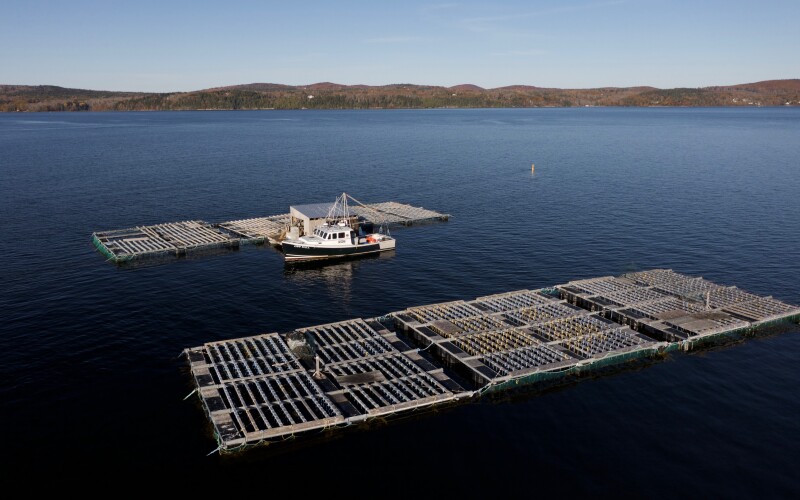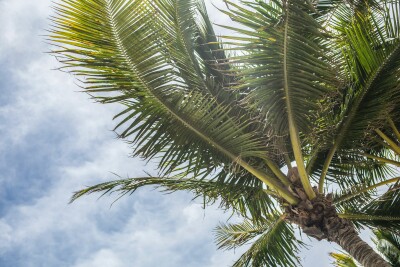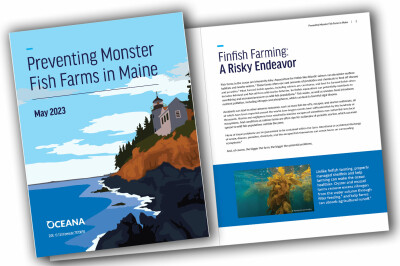While the ways that aquaculture can actively support commercial fisheries have been well established, there is nonetheless a tension between certain fishing and aquaculture communities. Though it can be easy to look at these two industries in a monochromatic way, aquaculture can open up brand-new opportunities for fishermen. Aquaculture farms represent another form of income for fishing families and can open up additional opportunities to employ those looking to get involved in jobs on the coast.
The tension between these communities can become prominent when certain perspectives are exclusively focused on, and National Fisherman fell into that trap with a recent article that only explored one perspective around the creation of a fish farm in Frenchman Bay, Maine. While the coastal community in Maine is a small one, it’s essential to contextualize the opportunities that projects like this can represent for hardworking fishermen who are considering expanding into the ground fishing, lobstering, and scalloping sectors of Maine’s state fisheries.
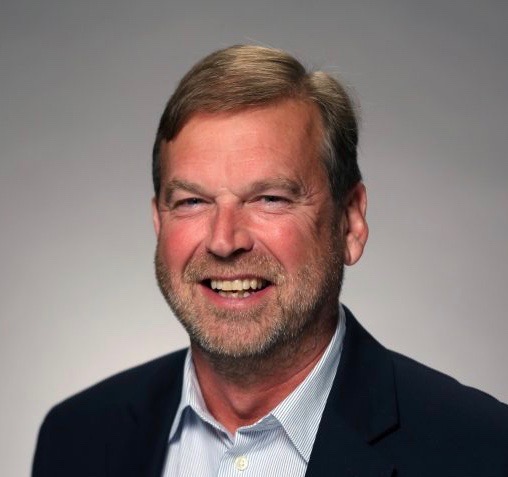
To provide that context, National Fisherman caught up with Sebastian Belle, executive director of the Maine Aquaculture Association. He fully detailed the opportunities that aquaculture can provide fishermen, clarified the current state of Maine state regulations on aquaculture farms, outlined why what was proposed at Frenchman Bay would have never been issued a lease in Maine and more.
Read his insights below but also feel free to get in touch to let us know how National Fisherman can continue to cover these topics in a more complete manner.
National Fisherman: There’s a lot we wanted to talk through with you, but first, can you tell us a little bit about how you view and approach the connection between the fishing and aquaculture communities?
Sebastian Belle (SB): I’ll start by calling out the aquaculture column that I read in the National Fisherman magazine back in the 1970s. That’s how long aquaculture has been a topic of interest for the fishing community. I used to read it on the way back from fishing out in Hudson’s Canyon. I read that column and was struck by the connections that were inherent to the fishing and aquaculture communities.
That’s why it’s disappointing to see narratives that try to break these long-standing connections, rather than reinforce them.
NF: That perspective is appreciated, because as we’ve also detailed, fishing and farming can coexist, but people from both communities often position the issues as a zero-sum game. Ultimately, how separate are those interests and these communities?
SB: They're really not separate at all. And that's one of the frustrations, because aquaculture has actually been in Maine for over 100 years. The first aquaculture facilities were government hatcheries, trying to restore cod and salmon. The Lab located at the Department of Maine Resources’ (DMR) Boothbay Harbor was originally a cod hatchery before it was given to the state as a DMR facility.
What’s new in Maine is the well-paid activists who are trying to pit one working waterfront group against another. They’re being paid to scare the commercial fishing industry. And they’re doing that because one of the seven criteria that the DMR must address when they do a lease review is whether or not there’s a conflict with commercial fishing. They know they can use fishermen to shut down the leasing process, and it’s a better reason than the ones actually driving their agenda.
NF: Is it that simple though? In terms of commercial fishing interests being taken into account in such a major way?
SB: If you look at the leasing criteria in Maine, it is illegal for DMR to issue a lease if there is commercial fishing in that area. By law it is illegal; they can't do it. They must examine what occurs on that site, whether it’s a critical habitat, and whether it has any significant commercial species. And if they find any of those things, they can’t issue the lease. So, at least in Maine, from a legal perspective, there's no way for there to be a conflict between commercial fishing and aquaculture.
Like anything on the water though, you’re going to have people disagree with each other about who's doing what. We see those arguments about all kinds of things in just the lobstering community. Of course, lobstermen don't always agree with each other about a variety of issues.
NF: Disagreements about who can do what on the water are nothing new, but as we experienced, it can be easy to focus on a single perspective at the expense of the larger reality. Along those lines, what are the biggest challenges you find yourself dealing with when it comes to better connecting the fishing and aquaculture communities?
SB: I think there's a perception about aquaculture that says it’s inherently in conflict with commercial fishing. And I absolutely reject that hypothesis. It's not. The reality is aquaculture is just another tool in a fisherman’s toolbox. And that’s something I came to realize on a personal level.
Just to put things in perspective, as a young fisherman, there was a time when we were averaging 24 pounds to the pot on a three-day soak. Lobstermen today won’t believe those numbers, but that's what we were catching. Seven years later, we were down to below two pounds to the pot. In the offshore fishery it was the wild, wild West. No laws, no conservation ethic. I knew something had to change, which is why I got into aquaculture. I just looked at it as another tool. It was about trying to figure out a way to produce seafood more sustainably.
That’s something more and more fishermen are realizing. Do you know who the biggest group of new members of the association is? They’re lobstermen who are going into aquaculture. By far.
There’s a common misperception about the leasing system in Maine that its easy to get a lease and there are no limits or regulations on aquaculture. That’s just not true. Think for a moment about a comparision to the lobster fishery. The reality is that lobsters are essentially a limited entry fishery. You can't just fill out a permit application and go into a harbor and say, “I want to be a lobsterman.” It doesn’t work that way. Its difficult to get into the fishery and there are lots of regulations around how you fish , where you fish ect. In aquaculture there is also a process you have to go through in order to get into the sector and how you operate. One big difference is in aquaculture the public, especially the commercial fishing sector, has a tremendous amount of input as to whether you get permission to go into aquaculture.
NF: That regulatory piece is something else we wanted to talk through with you because there’s a lot of confusion about the proposed farm that was designed to produce 30,000 metric tons of salmon every year in Maine. We reported on a push to create new legislation that limits large fish farm operations like these, but what hasn’t been contextualized about that effort or the farm that would be just half a mile offshore of Acadia National Park?
SB: The reality is that this project would never have been permitted, based on the existing criteria. It would have failed under at least three of the criteria that exist in the current leasing system. In fact, one of the interesting pieces of misinformation that Oceana and several of the proponents of the bill used was that the regulations in the state of Maine haven't changed. And that's not true.
One of the first things I did when I took this job was to go to the library in the state legislature and read. It took me a week to read the history of the aquaculture regulations in the state of Maine, but because of that, I can tell you for a fact that the regulations have been amended every year since 1977. In some cases, that was because the environmental community was pushing for a certain change. In other cases, it was because the Department of Marine Resources was pushing for them. But for somebody to say that the regulations haven't changed over the years, it's just not true.
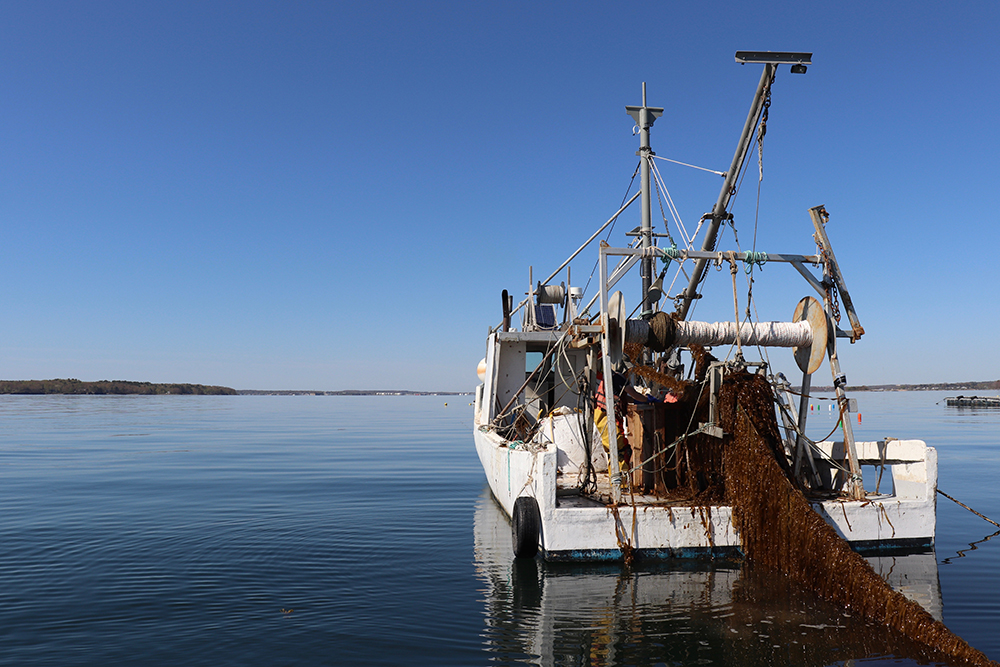
NF: So talk of new legislation being needed to save Maine from large fish farm operations is not just misleading, but inherently incorrect?
SB: It was reported on Seafood Source that Maine Department of Marine Resources Commissioner Patrick Keliher said that American Aquafarms’ original proposal was shut down for a number of reasons. So, he’s on record saying this project would never have been successfully proven.
Our position, and we've said this again and again, is that the Maine regulatory system is one of the strictest in the world. There's a reason that projects like this don't get through the system.
That’s the reality, and it runs contrary to terms that you put in your article like “dump trucks’ worth of salmon every year.” Would you use those terms when you were talking about tenders of the salmon industry in Alaska? Those are inflammatory terms that aren’t about the regulatory reality that we’re operating under.
NF: It’s a good point and something we’re going to be better about. But those terms are from the original report, which speaks to why these divides between communities are more about PR and positioning than the actual issues.
SB: It goes back to the misperceptions we were talking about earlier. The fact is, we have only one farm in Maine that is not owned by a family. There's a big misconception about what aquaculture really is in the state of Maine, but that’s also why all that we really ask is for our side of the story to be told. I’m not going to stand up and defend some of the stuff that goes on in other places, but our stories really need to be heard, especially in contrast to reports like that.
NF: The MAA’s dedication to working for the efficient production of food from Maine’s aquatic and marine environments speaks to your focus on this region, but it also underscores the complications that feed into the misperceptions we’ve been talking about. Because “aquaculture” in Maine means one thing from a legal and real-world perspective, but regulations and realities in different states, much less across the nation, are distinct.
SB: I’m not a lawyer; I'm a fisherman that has washed up on shore, so I understand the challenges. And yes, it’s complicated because it's not just state regulations, but it's federal regulations.
Maine is what's called a delegated state under the Clean Water Act. Maine was one of the last states in the country to become delegated. What that means is the federal EPA grants the state the right to issue the Clean Water Act. When we became delegated, the environmental monitoring for the finfish part of the aquaculture community was moved from DMR to DEP. At that point, you had to get a Clean Water Act permit, and it became a quantitative permit, so there were specific numbers and measurements that you had to meet.
When that happened, the regulations around finfish aquaculture got a lot stricter. That was about 15 years ago, and in terms of environmental monitoring and aquatic animal health monitoring, I think you could put these regulations up against anywhere else in the world.
NF: Those regulations would have prevented the proposed fish farm in Frenchman Bay, but some of these numbers are striking. Quoting from the source, “the American Aquafarms project would release 4.1 billion gallons of polluted wastewater into Frenchman Bay every day.”
SB: If you read the permit, you’d see that the salmon farm, by law, is not allowed to have any detectable impact beyond the mixing zone. The mixing zone is 30 meters around the farm.In addition, by law, they are not allowed to do anything that would impinge on the ability of the natural ecosystem to maintain itself.
If you were to swim under the farm, and you didn’t look up, you wouldn’t even know there's a farm above you. Now, that's not the case in other parts of the world. There are definitely places in the world where salmon farms have had negative impacts. But on the farms we’re talking about in Maine, there's no difference between what’s under the farm and anywhere else nearby.
The wastewater thing is captivating and terms like “billions of gallons” will catch people’s eye. But you have to understand that this is an organization that uses those kinds of numbers to raise a lot of money.
NF: The $35 million the organization raised in 2021 speaks to how much money that really is, but I’d guess their answer to questions about how they’re using that money and why they’re using those terms would be about protecting the environment at all costs. How legitimate of a position is that?
SB: There are people who work for many environmental groups who are very well-intentioned and sincerely want to protect the environment. But part of the challenge is that their business model relies not on finding solutions, but on prolonging the debate and fundraising around it..
That's why terms like “dump trucks of fish”, or headlines about a bazillion gallons of wastewater need to be closely considered. They use that kind of language because they know it catches headlines, but they also do that because they know that it's a way for them to energize people to sign checks. And that's the reason I think that many of those environmental organizations continue to try to polarize issues as opposed to really coming forward with solutions.
NF: Wrapping things up, is it really that simple for fishermen to think of aquaculture just like they would a piece of fishing gear? To your point of thinking of it as a tool to utilize when it makes sense, but do something else when it doesn’t?
SB: It is that simple. It really is just like another piece of fishing gear, not in a practical sense, but in the way that fishermen can use it to better support themselves.
Thinking of it that way can be beneficial because we’re all gearheads in the fishing community. That's what we love. But we are unquestionably seeing this understanding and interest in terms of the new members I mentioned earlier. And it’s not just lobstermen.
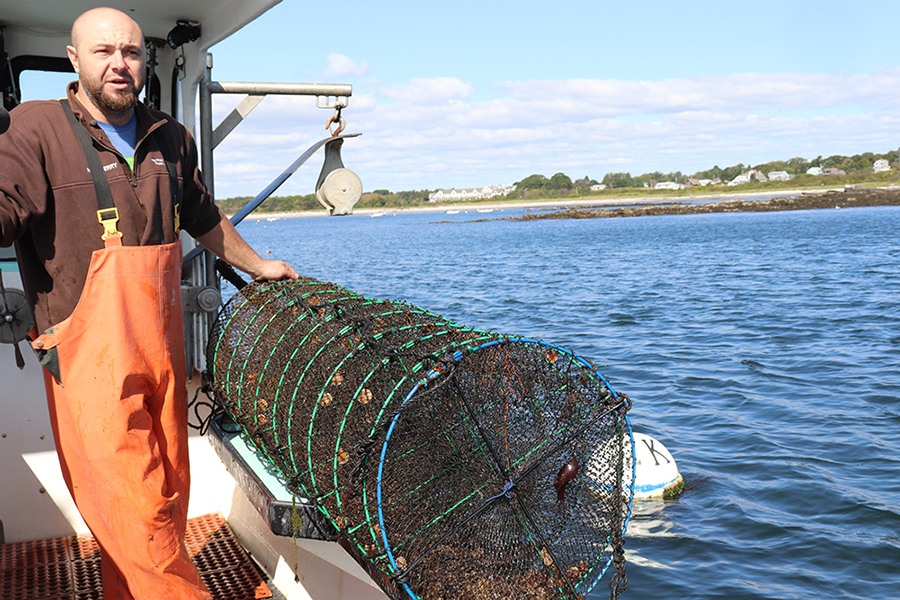
NF: Is that interest being driven by market changes? Or by seasonal shifts that are redefining how and when fishermen can get out on the water? Or something else?
SB: All of that and more. We've got huge challenges, and they’re specific to regions and communities. Out here, we’re dealing with gentrification on the coast of Maine. There's a reason that MLA and MAA helped co-found the Working Waterfront Coalition 20 years ago. We realized that we both had this challenge of preserving the working waterfront.
That goes back to thinking about aquaculture as a tool though, which is connected to the same thing I saw as a young man in the 80s. The world was changing, and that change is happening now just as it was then. Probably even more.
As a fisherman, I realized I couldn’t control the change that was happening around me, whether it was related to regulation, or the climate, or gentrification. So, I needed to find a way to diversify. I wanted to have more than one way to make a living in this. People today are doing exactly that.
We have someone in the MAA who has been a lobsterman for many years, but he now has an oyster farm. He makes more money from the work he does on his oyster farm than he did lobstering last year. That sends a message, and it’s one we want more fishermen to understand when it comes to the bottom-line impact aquaculture can represent for them and their families.





